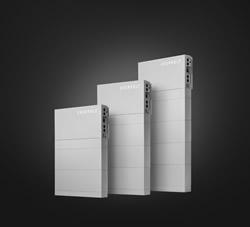PVinsights: As Low Efficiency Cell Inventories Skyrocketing, Suppliers Face New Reckoning
Polysilicon eked out gains earlier this year and continued on a steep downtrend after a choppy session this week as buyers worried about the prospect of downstream demand weakens due to mixed signals in the downstream demand failed to show recovery in March. Many polysilicon buyers hesitated to confirm orders as they presumed that the drop of polysilicon did not reflect the drop in the downstream accordingly. Hence, as polysilicon suppliers continued to ramp up production, the lack of orders had led the stockpiles to surge. Meanwhile, due to capacity expansion led by major mono-crystalline wafer makers, the consumption of polysilicon was rather steadier. Yet following increasing pressure from market downturn, the price for high purity polysilicon was also set to dwindle further. Following the accelerated slump of polysilicon in China, polysilicon suppliers in overseas markets also stirred price reduction. Moreover, as the fiscal quarter end approaches, many polysilicon suppliers were forced to dump unsold inventories, driving the polysilicon prices to drop at larger extent this week.
Multi-crystalline wafer prices dropped limitedly this week as the top tier multi-crystalline wafer makers lowered prices at limited scope for March orders. However, the pressure remained for multi-crystalline wafer prices since the demand recovery after lunar New Year was not as strong as wafer suppliers had presumed. Moreover, after lunar New Year, many multi-crystalline wafer suppliers, who cut the production in February, also planned to normalize their utilization rates in March. The increase in multi-crystalline wafer production compounded with fragile demand was set the tone for persisting oversupply, leading multi-crystalline wafer prices to dip consecutively this week. On the other hand, following the lead of top mono-crystalline wafer makers¡¦ decision on lowering prices, other 2nd and 3rd tier mono-crystalline wafer makers offered even competitive pricing in order to attract orders and selloff excess stocks. The high inventory level accumulated by mono-crystalline wafer makers also triggered the price rout, particularly when approaching the end of fiscal quarter.
Both multi-crystalline and mono-crystalline cell prices dropped slightly this week. After lunar New Year, since many solar cell makers is having faith that demand will rebound in 2Q18, they attempted to hike prices quotes for March orders. However, a number of fears lingered as major solar cell buyers reassessed the prospects for demand weakness in March, brace for the possibility of a broader price war and await the outcome of a sell off amid oversupply. Since the demand recovery sign was too fragile to drive the prices up, the attempt to hike prices eventually failed. As major solar cell buyers raised the threshold higher for solar cell efficiency, there were plenty of mid-to-low efficiency solar cells left for the inventory. The mounting stockpiles forced solar cell makers to adopt drastic measures to cut the prices in order to loosen the inventory levels by the fiscal quarter end. The overall market still hard to rebalance since solar cell makers normalize utilization rates in March. Similarly, mono-crystalline cell prices also lowered this week with the drop of multi-crystalline counterpart and upstream mono-crystalline wafer costs. Therefore, high stockpiles and weak solar wafer prices have given solar cell makers from China to overseas to sell off excess inventories as the fiscal quarter end approaches.
Solar panel prices remained on the track of a downtrend given that global demand strength in 1Q18 was worse than their previous estimation. In China, as the domestic demand remained sluggish, solar panel suppliers suffered from intensified competition, and such price rout also extend to other overseas countries. After The Indian Solar Manufacturers Association has withdrawn its anti-dumping petition regarding PV imports from China, Taiwan and Malaysia, more PV module suppliers, particularly Chinese module suppliers, have reinitiate shipments to India, driving the module price in India lower. In Japan and EU, demand also started to dwindle, resulting lower module prices in these regions. In the US, major Chinese solar panel makers continued to slash prices in order to digest their inventories building in 4Q17. Following the correction of upstream materials and the approaching quarterly financial closure, module makers even lowered prices at larger scope amid escalating price competition. Furthermore, more module suppliers tended to firstly adjust the prices for high-efficiency products lower, leading the multi-crystalline PERC and mono-crystalline PERC modules to drop at notable rates.
Featured Product

